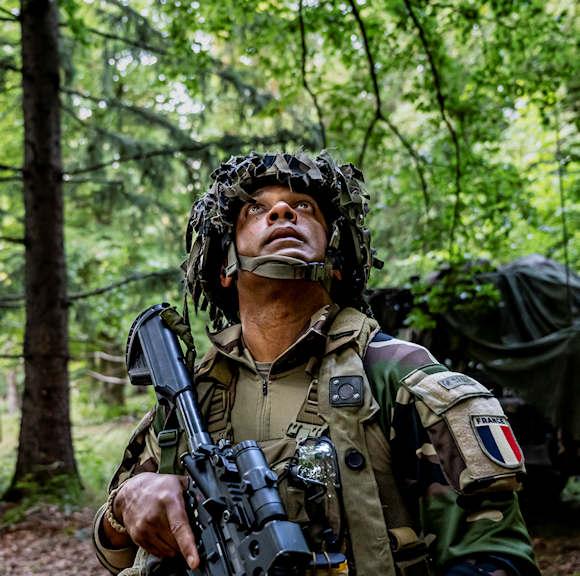Some doctrines and methods of warfare, typical of a distant past in which soldiers became real "cannon fodder", have fortunately been overcome and abandoned especially due to the exorbitant loss of human life. Just think of the old infantry forces locked in compact geometric formations, and made up of soldiers rigidly framed in the ranks, who slowly advanced towards the final clash of "hand-to-hand" combat, passing under a ferocious and merciless enemy fire, first from artillery and then from rifle fire. .
In any case, military combat doctrines have increasingly sought to safeguard the lives of their men by any means and as far as possible.
The greater value attributed to human life, the great development of technological progress and the use of new high-tech materials have contributed significantly not only to the creation and development of particularly lethal advanced armaments but also to the development of materials for armored protection and the development of vehicles and weapons that can be used at a distance without human presence, thus avoiding directly exposing men to possible dangers or fire from the enemy. In particular, as regards the use of means (underwater, surface, land or air), the use of those particular means, commonly called "Drones", which allow the carrying out of an certain number of high-risk missions without using men on board the vehicles themselves.
In general terms, initially (in the following photo an Israeli soldier in 1969) drones were conceived as small aircraft and the proof lies precisely in the name "drone" which in English has three meanings:
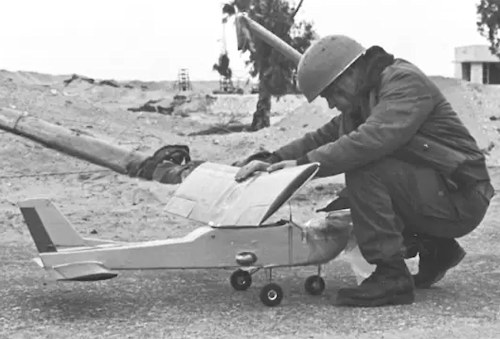
1) “drone” (the male bee), seeing in the noise produced by the drone a certain resemblance to the buzz produced by the drone's flight;
2) “monotonic engine noise”;
3) “hum”.
As is known, the main and peculiar characteristic of drones is the ability to be piloted or guided via "remote" or "distance" control (which can be a few hundred meters or thousands of kilometers, depending on the various models).
The lack of a human presence on board (who can guide or pilot them) has therefore defined drones as "Unmanned” (precisely “without man”), or even “Uncrewed” (“unmanned”).
In doctrinal and technical terms, drones are defined as "Vehicles", whether they operate in the air or on the ground, or "Vessels/Vehicles” whether they operate above or below the surface of the sea.
As far as control is concerned, drones essentially have two types of possible remote control:
• with human control, therefore radio-controlled / remote-controlled / wire-controlled, with a direct view from the camera mounted on the vehicle (remotely operated / controlled)
• without human control, i.e. "autonomous", i.e. with programmed mobility or with a movement generated through data coming solely from its on-board sensors.
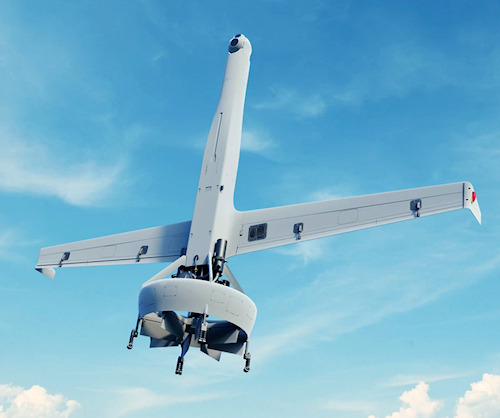 Advanced Robotics applications are already in place, supported by Artificial intelligence, which significantly expand its operational and tactical possibilities.
Advanced Robotics applications are already in place, supported by Artificial intelligence, which significantly expand its operational and tactical possibilities.
Again from a doctrinal point of view, drones are classified with acronyms which serve to immediately identify the physical element (sky, land and sea) in which they are intended to operate, also providing a "classification by use" useful to specialists (both technical and tactical) to immediately establish the consequent technical and operational differentiations:
planes
UAV: Unmanned Aerial Vehicle (remote-controlled or autonomous);
land
UGV: Unmanned Ground Vehicle (remote-controlled or autonomous).
naval / marine
UV: Unmanned Vessel (remote-controlled or autonomous). This acronym has essentially fallen into disuse in favor of its two important subcategories of use, namely "above" or "below" the surface of the sea;
vessels above the surface of the sea, or "surface"
USV: Unmanned Surface Vehicle / Vessel (radio-controlled/remote-controlled);
SUV/ASU: Surface Unmanned Vehicle (Vessel) / Autonomous Surface Vehicle (Vessel) (autonomous).
vessels under the surface of the sea, or “underwater”
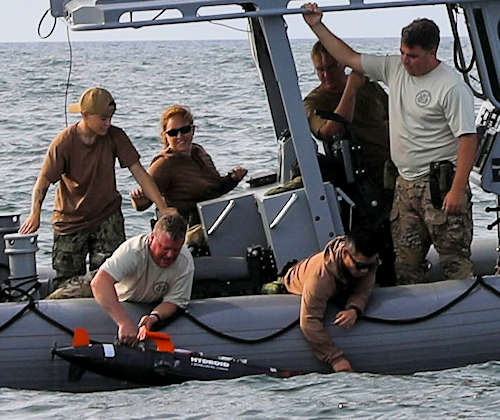 AUV/UUV: Autonomous Underwater Vehicle / Unmanned Underwater Vehicle/Vessel (autonomous, not wire-guided);
AUV/UUV: Autonomous Underwater Vehicle / Unmanned Underwater Vehicle/Vessel (autonomous, not wire-guided);
ROV/ROUV: Remotely Operated (Underwater) Vehicle/Vessel (wire-guided).
To fully understand the various current operational capabilities of drones, but also the possible future developments, a digression on the "aerial" ones is appropriate in order to then be able to "transfer" the operational concept, with the necessary technical-tactical distinctions, to the others types of land and sea.
In the context of what are now defined as "tactical UAVs", due to the wide range of drones now in production, the "A" in UAV can be understood, depending on the model, not only as "Aerial" but also as “Aircraft”, or like a real aircraft. In fact, it is possible to go from an aircraft weighing approximately 40.000 pounds (approximately 18 tons), such as a HALE UAV (High Altitude Long Endurance Unmanned Aerial Vehicle) up to a MAV (Micro Aerial Vehicle) or even a NAV (Nano Aerial Vehicle), i.e. a very small mini-drone, weighing 7/8 grams, which has the features of an insect (also called "ornithopter") and which flies by flapping its synthetic wings.
Incidentally, those drones of significant dimensions, specifically designed for combat use (therefore with large war load capacity and operational autonomy), are classified as UCAV (Unmanned Combat Aerial Vehicle).
In any case, in order to operationally use a generic drone, it is advisable to take into consideration a certain number of parameters, many of which are interdependent:
• type of Guide and Control Station;
• type of propulsion (electric or thermal);
• number of operators needed (pilot, pilot and armourer or pilot-armourer);
• weight, dimensions and transportability;
• capacity and type of take-off and landing/landing or launching and recovery;
• tactical capabilities and possibilities;
• operational range, flight altitude, operational depth;
• autonomy and permanence in the area of operations (from a few hours to whole days);
• load capacity (batteries, fuel, cameras, armament, sensors and various equipment);
• data transmission capacity (in real time, remotely, on time, upon return to the control station....). This problem is particularly acute for drones that operate under the surface of the sea (where transmission is guaranteed solely by sound waves) with the simultaneous need to still have to emerge on the surface, at least with an antenna, in order to transmit data over the air ( thus using electromagnetic waves).
• armament and sensors.
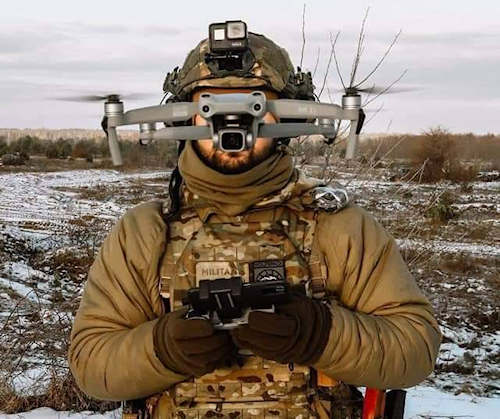 It is sufficient to have the catalogs of the large drone manufacturing companies (both for military and civil use) available to realize the enormous production of different models aimed at carrying out the most varied tasks.
It is sufficient to have the catalogs of the large drone manufacturing companies (both for military and civil use) available to realize the enormous production of different models aimed at carrying out the most varied tasks.
In recent years, from a military point of view, we have progressively and rapidly moved from surveillance, reconnaissance, exploration, patrolling, identification, trace reporting, investigation of bombs and counter-mining activities, to intelligence and of interception, electronic jamming and deception, inhibition of communications, up to the point of reaching real counter-guerrilla actions as well as full combat actions with the ability to hit enemy targets with missiles, rockets or bombs.
Drones have proven to be a very versatile and flexible operational tool, sometimes even reconfigurable thanks to the imagination and inventiveness of those who use them.
Their level of technological sophistication has also increased. Professional models of limited size and cost, as well as easily recoverable on the market, the so-called "COTS drone" ("Commercial Off-The-Shelf drone"), are "ready to use" and can be easily "militarised" with electronic and mechanical components commonly available on the market.
The low cost of these small to medium-sized drones (generally "quadricopters" with 4 rotors and 4 engines) has allowed some countries to produce them on a very large scale, making them formidable carriers capable of saturating, in an offensive position, enemy systems. conventional air defense or to contribute, in a defensive position, to the creation of the so-called "Anti-Access Bubble" (A2/AD: Anti Access/Area Denial).
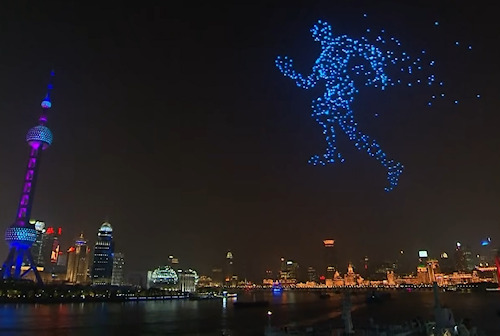 Just think of the formidable demonstration with 2000 drones (quadricopters equipped with LED lights) which continued to form beautiful, continuously and rapidly changing colored images in the night sky of Shanghai on the occasion of the Chinese New Year of 2020. This is the "civilian" use ” of a well-known military technique for command and control of aerial drones which is called “swarm attack”, i.e. an advanced form of the “group attack”.
Just think of the formidable demonstration with 2000 drones (quadricopters equipped with LED lights) which continued to form beautiful, continuously and rapidly changing colored images in the night sky of Shanghai on the occasion of the Chinese New Year of 2020. This is the "civilian" use ” of a well-known military technique for command and control of aerial drones which is called “swarm attack”, i.e. an advanced form of the “group attack”.
What does the “operational difference” consist of? With the "group attack" the 2000 drones are controlled individually, and therefore 2000 operators are needed, while with a "swarm attack", using new technology, command and control goes only to the "swarm leader" drone as all those belonging to the same swarm are automatically controlled by the "swarm leader" drone, thus significantly reducing the necessary number of operators. These drones are also equipped with an Artificial Intelligence component (AI) which allows them to be able to carry out complex and very fast tactical air combat maneuvers, also resulting in an unexpected and formidable "anti-drone" measure when used in the mode called "drone on drone combat" (or "drone dogfighting"), engaging a real "drone-against-drone" air combat, seeking the clash and impact with the enemy drone (regardless of the lack of armament or in any case with minimal armament such as a simple hand grenade placed under the body central).
A further technical-tactical development, as noted in the current Russian-Ukrainian conflict, took place in the sector of surface marine drones, the aforementioned USVs, using an idea that our Royal Navy had already developed during the 2nd World War with the creation of 5 types of assault motorboats called "explosive boats", (armed either with 300 kg of explosives or with torpedoes and bombs) which however were driven by a pilot who, about 500 meters from Upon impact with the enemy ship, he was thrown into the water.
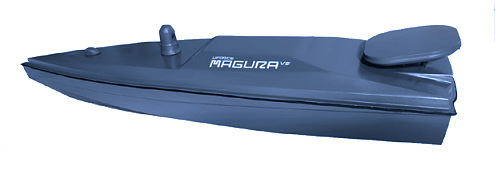 The Ukrainians have created two marine drones for surface attack (the "Sea Baby" and the "MAGURA" / Maritime Autonomous Guard Unmanned Robotic Apparatus) which, to give a rough idea, aesthetically resemble a sea canoe, have (depending on the models) a length ranging from 5 to 10 meters, they can weigh up to one ton and can carry from 300 to 800 kg. of explosives, they can reach a maximum speed of over 40 knots and have a range of over 400 nautical miles.
The Ukrainians have created two marine drones for surface attack (the "Sea Baby" and the "MAGURA" / Maritime Autonomous Guard Unmanned Robotic Apparatus) which, to give a rough idea, aesthetically resemble a sea canoe, have (depending on the models) a length ranging from 5 to 10 meters, they can weigh up to one ton and can carry from 300 to 800 kg. of explosives, they can reach a maximum speed of over 40 knots and have a range of over 400 nautical miles.
A huge surface drone (the "Sea Hunter") was even created for the US Navy, a real ship with anti-submarine capacity, 40 meters long and weighing over 130 tons, with a maximum speed of over 25 knots and with an autonomy of over 9800 nautical miles, being able to remain at sea without supplies for up to a maximum of 3 months.
USVs have also had a notable development in the reconnaissance sector for the benefit of special forces and amphibious units with the creation of a sphere for amphibious reconnaissance of the seabed, the sea surface and the beaches (its acronym seems to be for the moment ASRR - Amphibious Spherical Reconnaissance Robot) and a surface reconnaissance drone for operators of special forces and amphibious troops, shoulderable, weighing approximately 10 kg, approximately 90 cm long, with a maximum speed of approximately 25 knots, with a autonomy exceeding 230 nautical miles, with hybrid propulsion to also be able to take advantage of very silent electric propulsion (the acronym ADARO/MUSCL has already been identified, but the meaning of which is not yet known).
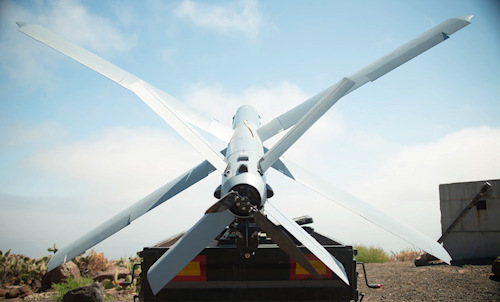 In the broad and ever-expanding panorama, the so-called "suicide drones" or "Kamikaze drones" also appear: from a doctrinal point of view it was considered a misnomer as initially (but really initially!) the drones did not include any type of armament . In any case, the correct term for suicide drones is “Loitering Munitions” (LM), or “circling munitions” or even “loitering munitions”. In reality it is a real munition which, however, seems to be a cross between a fixed-wing drone and a missile or a rocket.
In the broad and ever-expanding panorama, the so-called "suicide drones" or "Kamikaze drones" also appear: from a doctrinal point of view it was considered a misnomer as initially (but really initially!) the drones did not include any type of armament . In any case, the correct term for suicide drones is “Loitering Munitions” (LM), or “circling munitions” or even “loitering munitions”. In reality it is a real munition which, however, seems to be a cross between a fixed-wing drone and a missile or a rocket.
The "munition", once launched, flies over from a certain altitude to reduce the possibility of detection, the assigned area waiting in flight (here is the "loitering") to be able to locate and identify the target, or through the operator “remotely” or through its on-board sensors (with AI protocol), and then proceed to engage and destroy the target itself.
If the mission is canceled or the target is not identified, the munition can return to base or otherwise be recovered. Conversely, to face and counter the use of drones by the enemy, technical-tactical counter procedures have been consolidated which are implemented using both forms of physical counter (through mechanical harnessing with suitable nets or by proceeding directly to killing him with firearms) and electronic contrast (using electronic weapons capable of blocking or electronically confusing his driving signals).
In this regard, "Electronic Warfare" is able to provide a wide range of diversified equipment for radio, radar and satellite jamming (jamming), electronic deception (deception), interference (spoofing), as well as laser equipment, particular "electronic rifles" as well as specific curtains of electronic countermeasures.
The military sector that deals with the doctrine, tactics and forms of combat of drones is defined as "Drone Warfare”: it is a sector in continuous updating due to the rapid developments of the subject which needs to expand its operational and tactical skills.
In light of the continuous technological development offered by robotics, mechatronics and AI, it is conceivable that the current limits of military use of drones, whether in the air, on land or at sea, will be rapidly overcome.
Photo: US Army Reserve / Shabtai Brill / David Hylton / US Navy / web / US Marine Corps

